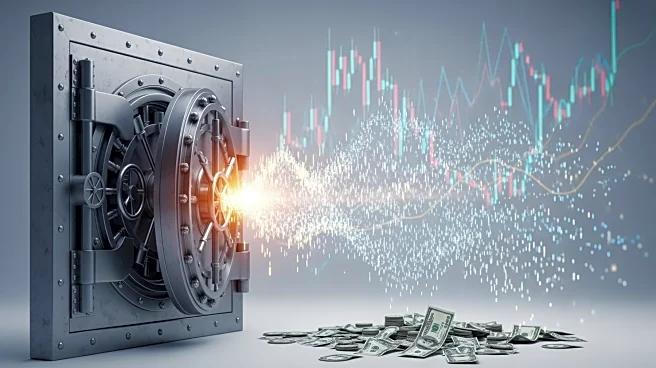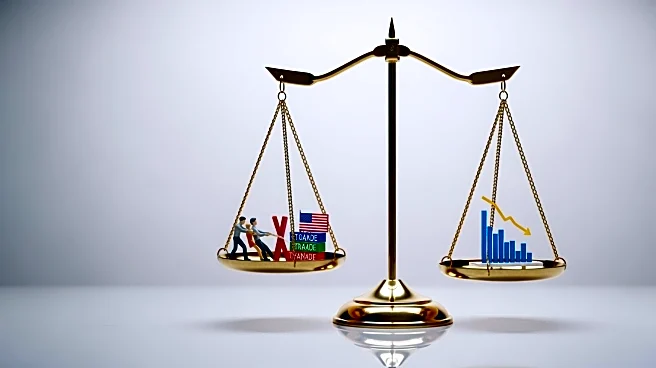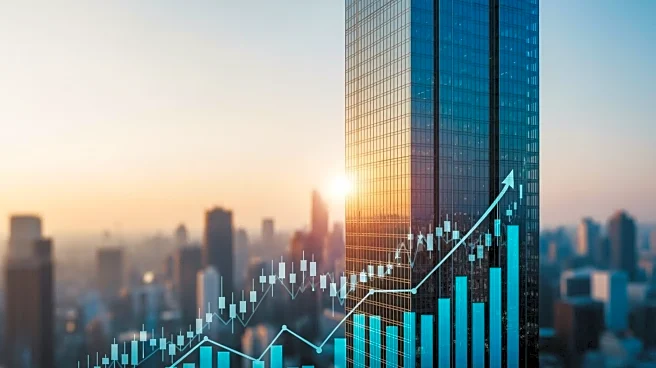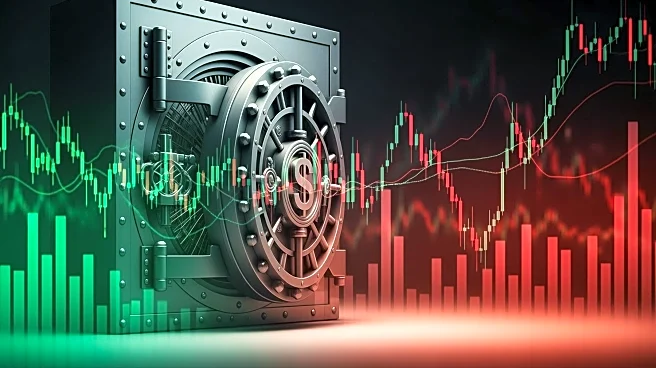What's Happening?
Gold prices have reached a new record high, driven by safe-haven buying amid escalating U.S.-China trade tensions. U.S. officials have criticized China's expansion of rare earth export controls, viewing it as a threat to global supply chains. This development
has contributed to increased investor interest in gold, traditionally seen as a stable asset during times of economic and political uncertainty. Spot gold prices rose by 0.7% to $4,235.41 per ounce, with U.S. gold futures for December delivery up 1.2% at $4,252.30. The metal has seen a 61% increase year-to-date, reflecting investor unease over U.S. policy credibility and expectations of interest rate cuts.
Why It's Important?
The expansion of China's rare earth export controls poses significant risks to global supply chains, potentially affecting various industries reliant on these materials. The surge in gold prices highlights investor concerns over economic stability and the credibility of U.S. policies. As gold is a non-yielding asset, it tends to perform well in low interest-rate environments, which are anticipated due to potential U.S. Federal Reserve rate cuts. The ongoing trade tensions and the federal government shutdown, which may cost the U.S. economy up to $15 billion a week, further exacerbate economic uncertainties, prompting investors to seek refuge in gold.
What's Next?
Investors are closely monitoring the situation, with expectations of further interest rate cuts by the U.S. Federal Reserve in October and December. These anticipated cuts are seen as highly likely, with probabilities of 98% and 95%, respectively. The continuation of trade frictions and economic uncertainties may sustain the demand for gold, potentially driving prices even higher. Analysts suggest that for gold to reach $5,000 in 2026, physical demand must remain steady alongside an upswing in financial demand for gold allocations.
Beyond the Headlines
The implications of China's rare earth export controls extend beyond immediate economic impacts, potentially influencing geopolitical relations and strategic resource management. The reliance on rare earth materials for technology and defense industries underscores the importance of diversifying supply sources to mitigate risks associated with trade restrictions. Additionally, the sustained interest in gold reflects broader concerns about global economic stability and the effectiveness of monetary policies in addressing these challenges.













